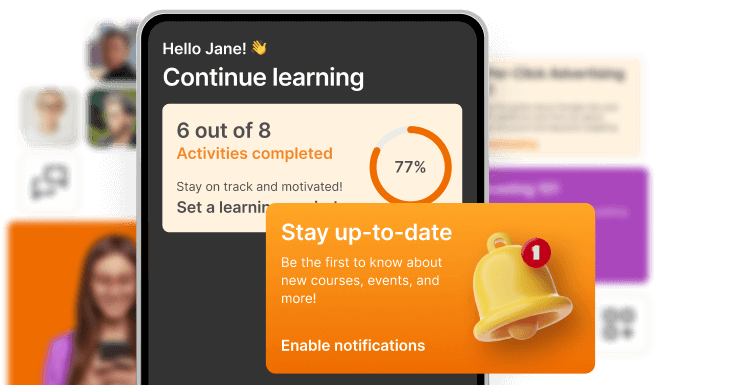Table of Contents
Looking for a marketing strategy that creates deep connections with your target audience? You might consider community-based marketing (CBM), a strategy that centers around building genuine connections with your community.
Author and marketing expert Mark Schaefer calls community “the last great marketing strategy”, and according to community marketing platform Tint, 74% of consumers say being a part of a community increases their trust in a brand. This goes for online education too.
In this article, you’ll see how to make community-based marketing work for your online course by understanding what it is, learning the benefits of community-based marketing, and taking a close look at some effective community-based marketing strategies.
What is Community-based Marketing?
Community-based marketing centers around a community of like-minded, similarly-driven customers. For online education, this could be a group of people interested in learning, for example, a new language, fitness and lifestyle tips, or coding.
A community-based marketing strategy focuses on authentic communication and engagement with that group of people to create trust and a sense of belonging for its members.
To be clear: the purpose of CBM isn’t to curate a community so you have an easy customer base to sell to—that’s a great way to lose their trust. The focus should be to create a place where members feel safe, seen, heard, and supported.
At its core, community-based marketing has genuine, authentic connections between its members and the brand or product the community is centered around.
This connection is supported by three key principles:
Authenticity
People want authentic interactions; they want to feel like a person and not just a number. For a brand, this means being transparent, consistent, and true to your brand values.
Being authentic builds trust and credibility, making it more likely that community members will advocate for and engage with your brand.
Two-way communication
Hand-in-hand with authenticity is two-way communication. Your audience doesn’t want generic messaging (“That’s great!”, “Love it!”) when they reach out or comment on social media.
They want thoughtful responses that add value. As a brand, this means actively listening, addressing concerns, and facilitating discussions. By showing you care for the input and ideas of community members, you encourage deeper engagement.
Community building
And of course, for community-based marketing to work, you need to build a community. This could look like organizing events or creating exclusive online spaces where your community members can meet and interact.
A community transforms your audience from simply buyers to a supportive network and may result in members advocating for your brand via word of mouth.
These three principles come together to create a powerful collective where members of a brand community support and interact with each other and the brand it’s centered around.
Traditional Marketing vs. Community-based Marketing
Community-based marketing differs from traditional marketing by hyper-focusing on connecting authentically with and creating space for a community of people rather than a broad audience.
And that’s a good thing — according to Forbes, 82% of Gen-Z skip or block traditional ads when they can, preferring instead to learn about products from real people (like influencers) or those who are part of a like-minded group.
Check out this example to see how community-based marketing can compare to traditional marketing for an online course:
Traditional marketing:
A coding course provider, we’ll call them Blake, uses a banner ad campaign on social media and education platforms to promote a 50% discount on their entire catalog of coding courses.
Community-based marketing:
A different coding course provider, we’ll call them Sam, partners with a well-known TikToker who specializes in Python. They create a series of exclusive, free, Python workshops and interactive coding challenges.
Together, Sam and the TikToker promote the workshops and challenges through the TikTok channel to target and engage aspiring Python coders.
Some key differences in the strategies above are that the community-based marketing plan focuses on collaboration, engagement, and a bit of exclusivity to provide meaningful, informative (and yes, free) content to followers.
This type of community-based focus has real benefits, let’s take a look.
Benefits of Community-based Marketing
To help you understand how community-based marketing can work for you, you might want to look at how it can positively impact the success of your brand.
Community-based marketing offers:
Other benefits can include:
When it comes to benefits for your online education brand, using community-based marketing can give your learners the chance to connect and collaborate through a shared course. This can lead to:
→ Increased learner engagement: Through your community, learners can enjoy a sense of fellowship or camaraderie, which can make the learning process more enjoyable. They also have better access to you, the course creator, making them feel connected and seen.
→ Improved learning outcomes: Learners in your community can bounce ideas off of each other, ask questions, debate, and actively participate in discussions that can lead to better overall learning.
→ Enhanced course value: A community gives learners more to work with. Not only are they guided through your course content, but they also have opportunities to enhance what they learn by talking with other community members.
→ Better visibility and reach for your course: Happy learners talk to other people. If you give them a place where they feel supported and encouraged, they may share that with others through testimonials and reviews or on their social media accounts.
Using a community-based marketing strategy for your course doesn’t have to be complicated.
Having a strong understanding of how community marketing strategies work can help you use CBM effectively. Let’s look at the basics.
Successful Examples of Community-based Marketing
Below are some examples of big brands and how they effectively (and successfully!) use community-based marketing to boost their marketing efforts.
Patagonia’s Action Works
Patagonia is a renowned outdoor recreation retailer. The company is famous not only for its products but also for its efforts to improve communities worldwide through its Patagonia Action Works program.
Action Works connects Patagonia customers with environmental organizations to help them find opportunities for volunteering and activism that align with their values. In doing so, it creates a sense of community and shared purpose.
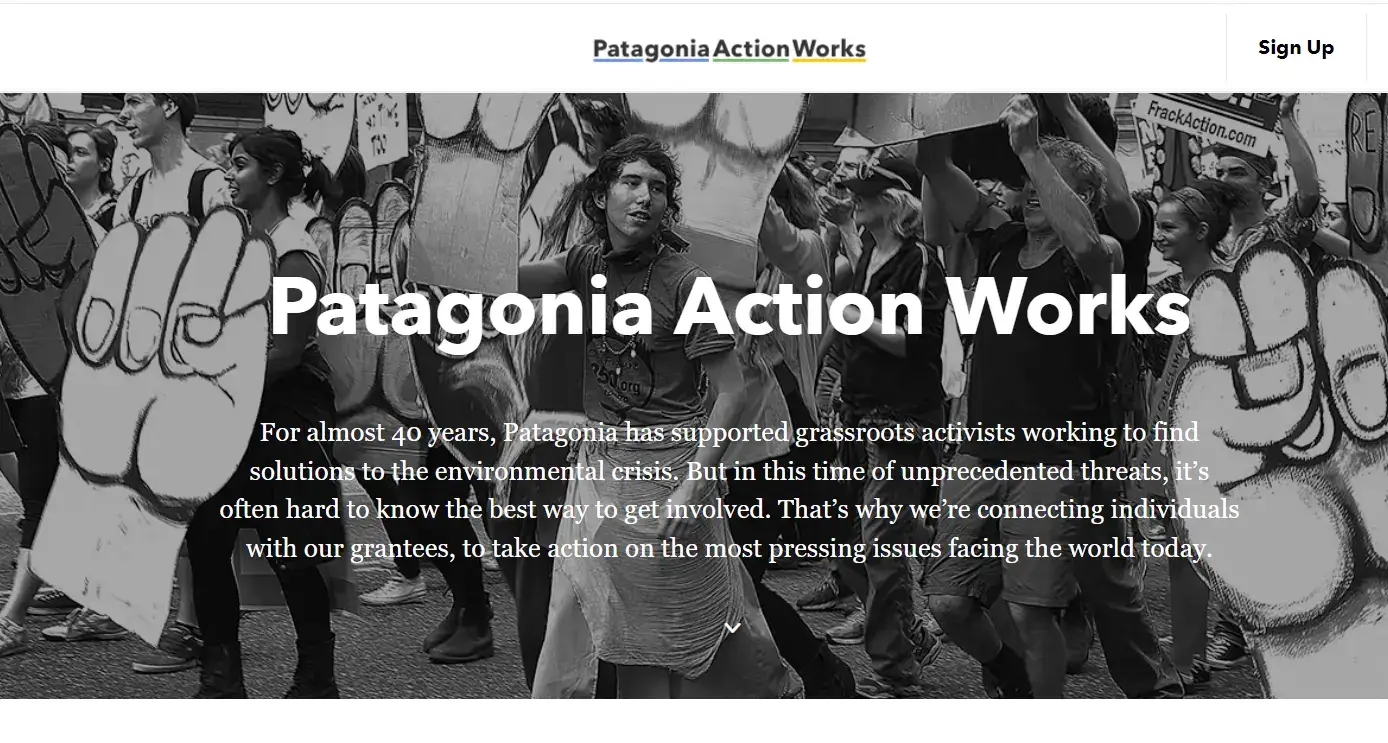
Patagonia encourages Action Works community members to share their experiences on social media and through their community platform. This works to create a collective of individuals inspired to get involved in environmental activism.
Action Works is a powerful example of connecting like-minded customers with a united purpose, which reinforces Patagonia’s mission and values and encourages brand loyalty.
Red Bull’s Athlete Community, Clubs, and More
Energy drink company Red Bull’s community-based marketing efforts are vast and varied.
For starters, it has its Athlete Community, which works as an exclusive hub for athletes to connect with sponsors, receive support, and collaborate with other athletes. It also has clubs such as the Red Bull Music Academy or Red Bull Air Race that serve as centers for individuals to form tight-knit communities around a shared interest.
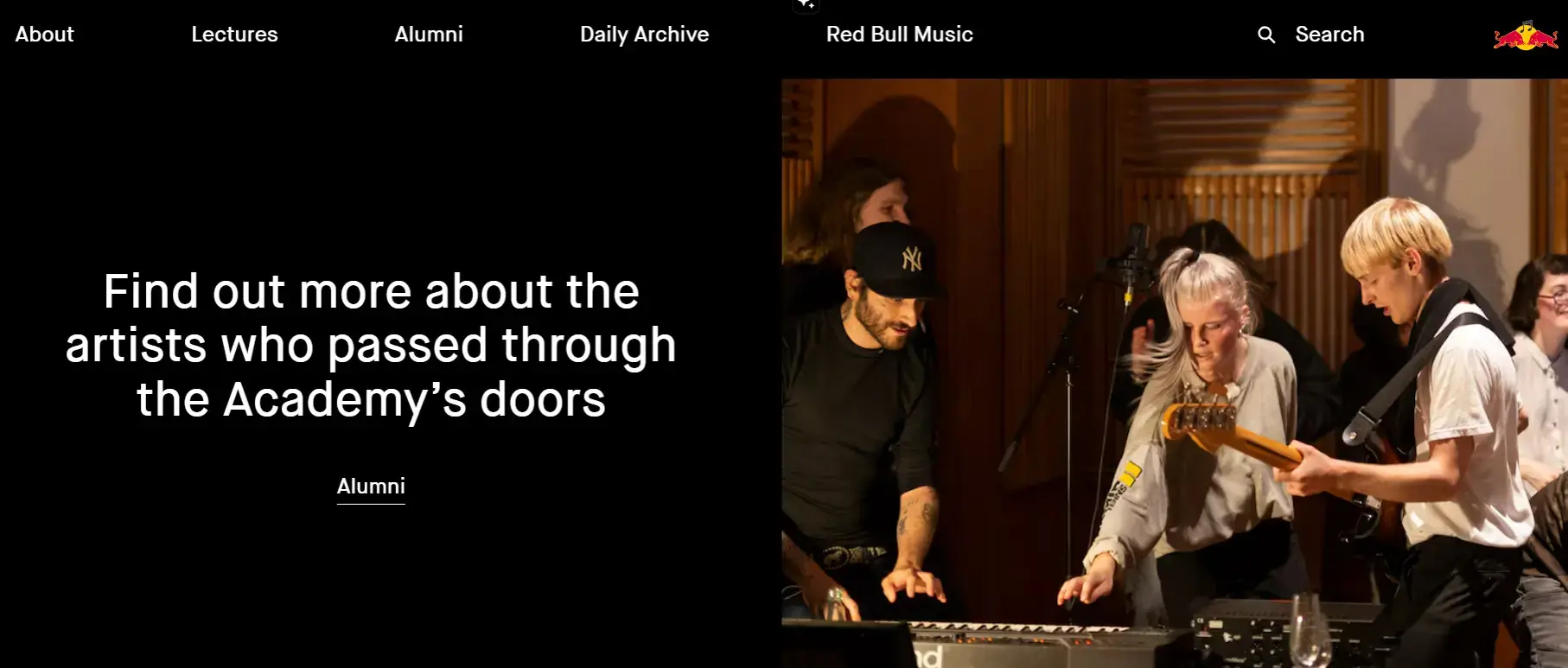
Red Bull’s communities aren’t just for athletes and enthusiasts either. Red Bull hosts the Red Bull Basement, a global successful community program that empowers students to work toward positive change through innovation and technology.
To spread the word and strengthen these communities, Red Bull uses social media, sporting events, festivals, and more to advertise either commercially or through user-generated content. All in all, Red Bull’s community-based marketing efforts are massively successful and contribute in a big way to the success of the brand.
How Community-based Marketing Works
Here’s how community-based marketing works—and how you can make it work for you—in 10 simple steps. To help you visualize it in practice, we’ll use our fictional course provider, Sam, as an example.
Step 1: Identify and Refine Your Target Community
Remember that you want to build a community of people who share and identify with your brand values. So make sure you have defined your brand’s greater purpose and have clearly outlined its values before you start.
Check out already existing groups and community platforms online to get a sense of your target demographics and what they may be looking for. Discover what your audience values and ask yourself what may be missing from these groups that you can offer through your community.
Example: Sam checks out online communities for professional coders on Reddit and LinkedIn to see what questions people are asking. Sam uses this information to create pillars for their own coding community.
Step 2: Choose a Space and Create Your Community
There are many places you can choose to host and manage your community, like Discord, Slack, Facebook, or even your brand’s official website (if you have one). Invite people to join your community using social media, email lists, blogs, or any other way you connect with your audience.
Example: Sam chooses an online course platform like LearnWorlds to host their community using its powerful built-in community features.
Step 3: Create Engaging Content and Resources
To help your community feel valued and engaged, create freebie content they can use and discuss. The key here is to make the content valuable and exclusive to your community. Advertise the content using your social media channels and email marketing.
Example: For their coding course, Sam creates and shares checklists with common coding terms that can be easily referenced by their community members. These resources are only available for download through Sam’s community platform.
Step 4: Encourage Community Engagement
This can be done by hosting online live events or even local meetups. Encourage your community members to attend and make them part of the planning process by asking them what they would like to discuss or learn at these events.
Example: Sam hosts a live webinar using LearnWorld’s Live Sessions to encourage student interaction with polls, chats, and breakout sessions.
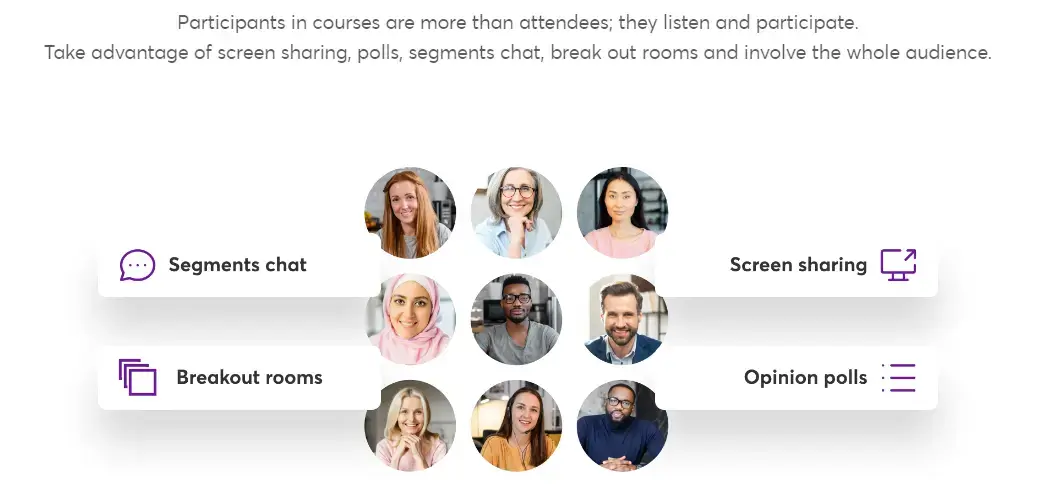
Step 5: Gather and Implement Feedback
Conduct polls, use surveys, or read chats and threads to better understand what your members are looking for. Use this information to update your offerings and communicate to your members that you heard what they want and are adjusting to match.
Example: Using LearnWorld’s survey builder, Sam creates a survey to see what learners thought about a recent course offering.
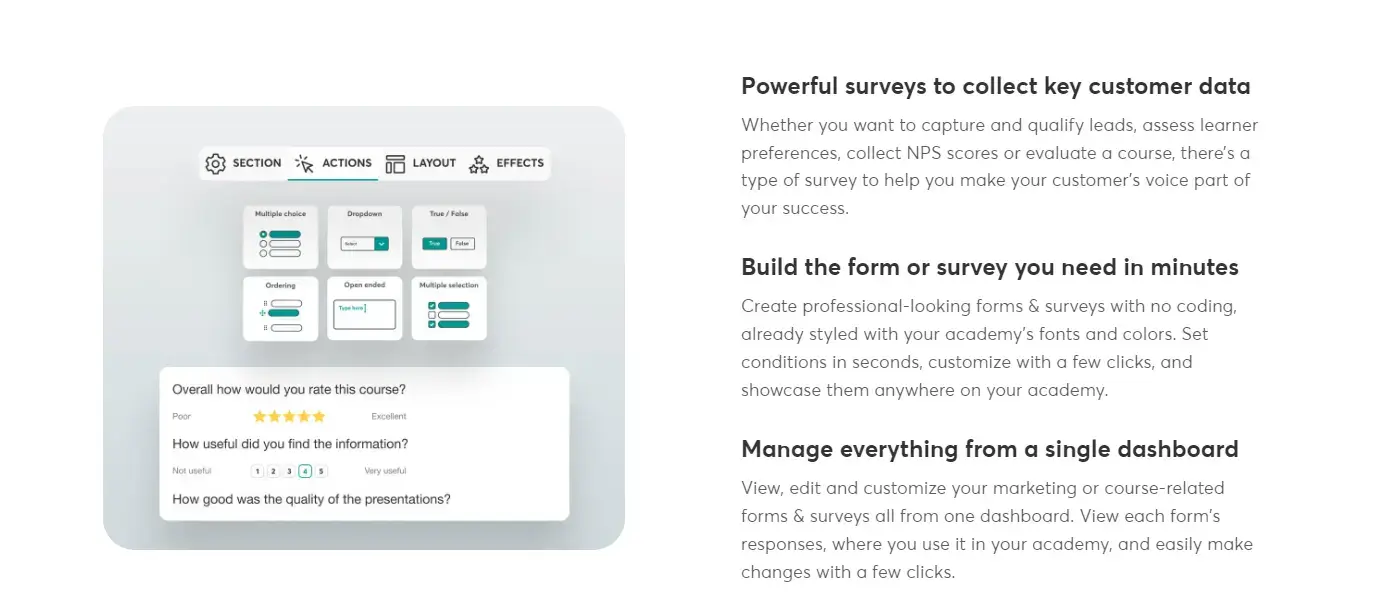
Step 6: Reward Brand Loyalty and Advocacy
Take time to reach out and acknowledge top contributors to your community. This could look like allowing them to organize or co-host an event or simply awarding a “Top Member” badge to highly active members and brand advocates.
Example: Sam enables LearnWorld’s gamification features to help members stand out for their contributions by awarding badges like, “Golden Community Member” or “Mentor.”
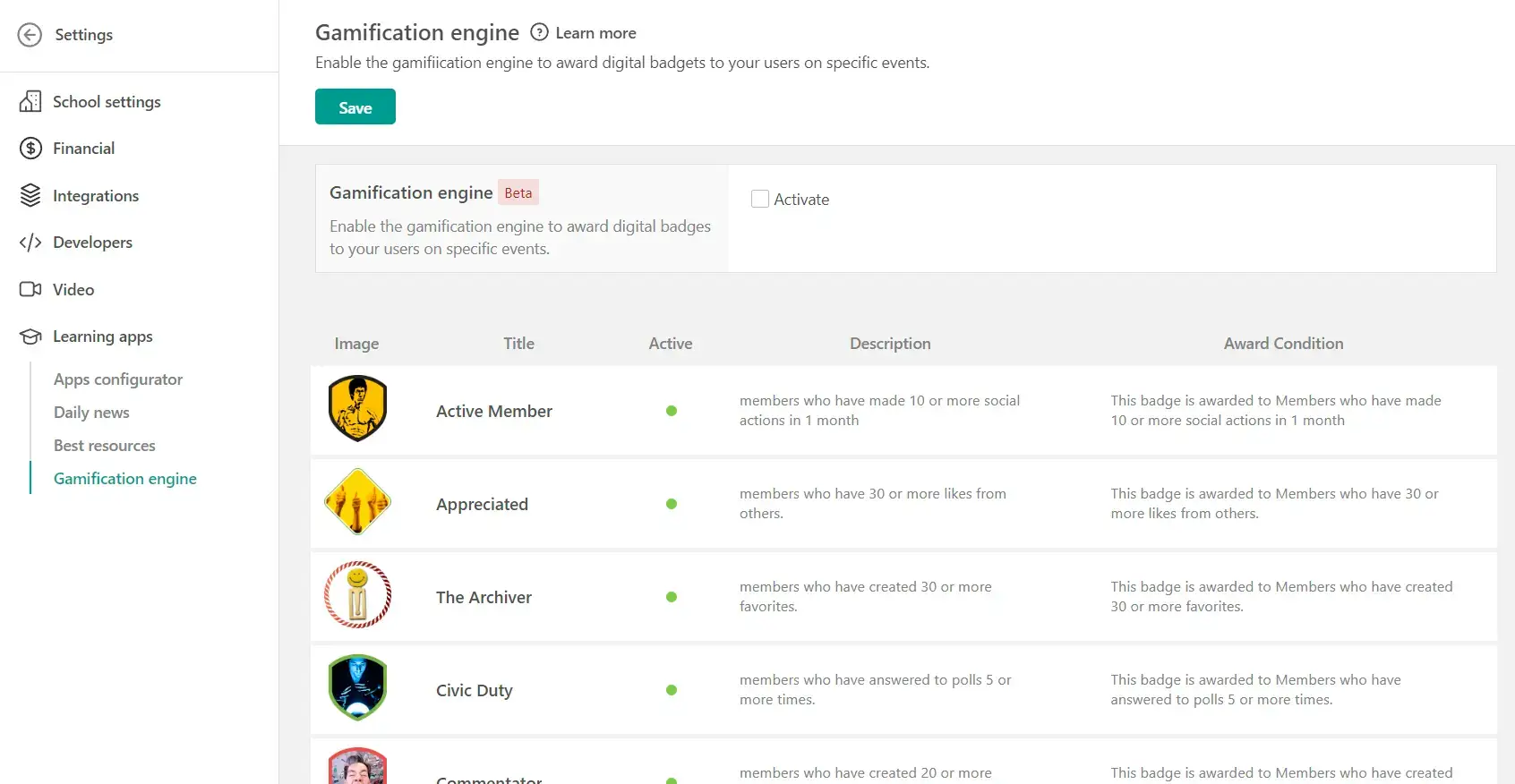
Step 7: Measure and Analyze
Tracking metrics is an important part of any marketing strategy. Assess your participation rates, content interaction, conversion rates, new sign-ups, and more to get an idea of where your community-based marketing efforts have been successful and where they need work.
You can do this directly through your community hosting platform and by looking at metrics available on your social media channels or website.
Example: Sam uses LearnWorld’s in-depth analytics reports to analyze user progress and engagement and assess their financial metrics.
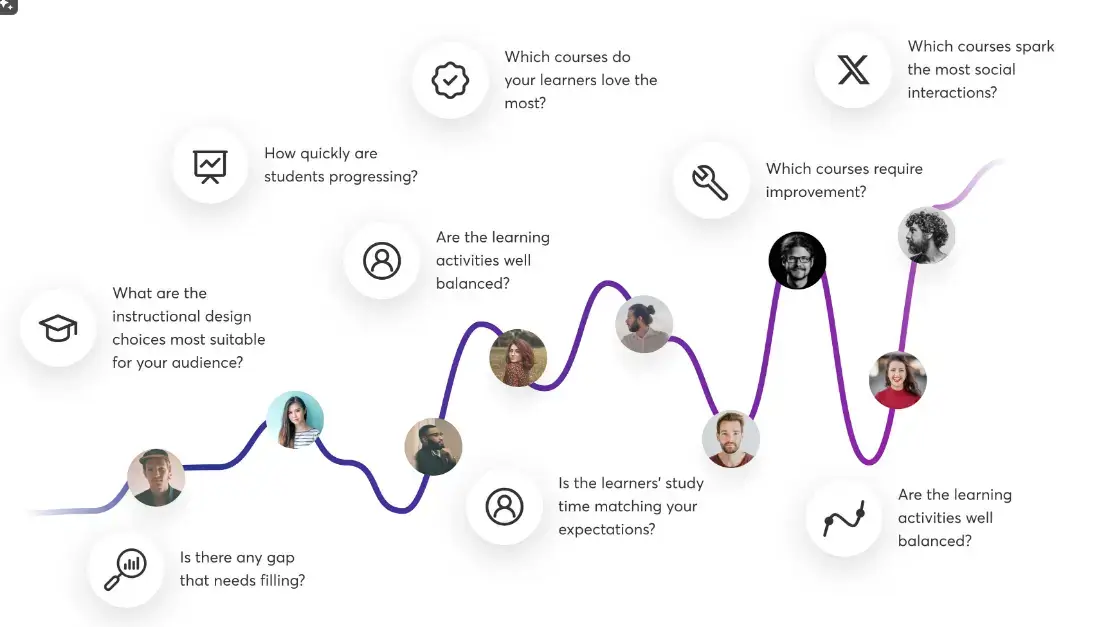
Step 8: Adapt, Evolve, and Be Transparent
After reviewing your analytics, you will likely have a clear idea of what can be improved. Couple this with the feedback you gained in Step 5 to clearly outline the steps you can take to level up your community.
Be transparent with your members and let them know how you plan to make improvements based on their feedback.
Example: Sam sees that learners often quit a particular lesson module without finishing, and they understand from community interactions that the course material is too difficult. So, Sam revises the content and announces in a community forum when the new updated course material is available. To field any questions before re-launch, Sam hosts a live webinar.
Community-based Marketing Challenges and Solutions
Although often successful, a community-based marketing strategy is not immune to challenges. You may find it difficult to maintain engagement or struggle with moderating diverse opinions and potential conflicts within community forums.
Here are two common community-based marketing challenges and how to tackle them:
Maintaining engagement
Long-term engagement is a pillar of community-based marketing. And while members may be excited and active when they initially join, what do you do when their engagement flags?
Moderating conflicts
It makes sense that community members may occasionally clash over differing opinions and ideas. When this happens, it is your responsibility to resolve conflicts respectfully.
Strengthen Your Brand with Community-based Marketing
In our fast-paced, post-pandemic world, the growth of both online and in-person local communities signals the rising importance of community-based marketing as a key strategy.
Using this type of marketing as part of your marketing initiatives can transform how you connect with your potential customers and deepen trust between you and your learning community.
For a more hands-on approach to building a thriving community, check out how a platform like LearnWorlds can give you the tools and resources you need for success.
Get your free trial with LearnWorlds today!
Further reading you might find interesting:

Ciera Lamb
Ciera is a freelance content writer and editor connecting companies with their ideal audiences through blog articles and other online content. She approaches her writing with curiosity and research and enjoys the ever-present learning that comes with being a content writer. She is also an avid scuba diver, an aspiring Dutch speaker, and lover of all things nature.


